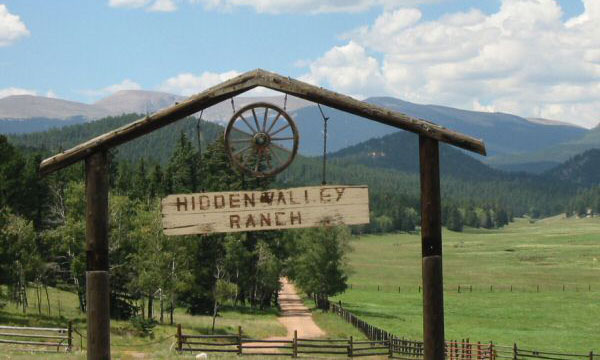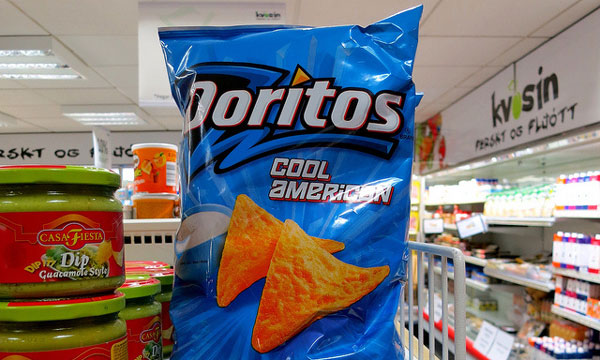Let's Get Sauced
Yes, this is an article about ranch dressing. And yes, ranch dressing was invented at Hidden Valley Ranch. Here's some stuff you didn't know about ranch.
Sponsored By … You?
If you find weird or unusual topics like this super-fascinating, the best way to tell us is to give us a nod on Ko-Fi. It helps ensure that we can keep this machine moving, support outside writers, and bring on the tools to support our writing. (Also it’s heartening when someone chips in.)
We accept advertising, too! Check out this page to learn more.

Meanwhile, back at the ranch …
To answer your question, ranch dressing did in fact come from a ranch. And yes, the name of that ranch was Hidden Valley.
But the route to fame didn’t just start there.
It started in the Alaskan bush, where businessman Steve Henson—who played cook on top of his main gig as a plumber—came up with an idea to help calm down the workers annoyed that they had to eat salad.
“It’s tough to feed men up in those bush jobs,” the Nebraska native told Los Angeles Times food reporter Sergio Ortiz in 1999. “If they don’t like something, they’re as likely to throw it at the cook as they are to walk out cursing. I had to come up with something to keep them happy.”
(The source article isn’t online in easily accessible form, but I did you a favor and put up a version of it here.)
His solution involved a mixture of three fairly simple ingredients: mayo, buttermilk, and various herbs. It proved just the thing to get the workers to eat their vegetables.
That simple combination would come to save Henson and his dwindling nest egg after he finally launched the ranch of his dreams in 1954 outside of Santa Barbara, California.
Henson’s dude ranch was essentially intended as a hideaway for tourists. It occasionally drew some, but it wasn’t the ranch itself that was driving chatter after the fact. Rather, it was the dressing served on the salad.
Customers started asking for bottles to take home, some in increasing numbers. In one case, a visitor from Hawaii asked for 300 bottles at once. Henson and his wife couldn’t make that many bottles in a short amount of time, so he instead offered the visitor a number of spice packets, telling him how to reproduce the recipe.
The visitor soon wanted more spice packets. Slowly but surely, the dressing became more popular than the ranch. And while Henson hoped to become rich with a ranch, the ranch he became rich from outgrew the far-off property from which he launched the company.
“The orders were humongous,” Henson told the newspaper. “What started out almost as a lark became a multimillion dollar industry.”
The world could not be kept away from this milky juggernaut.
$8M
The amount that the cleaning company conglomerate Clorox paid for Hidden Valley Ranch in 1972. The sauce became a major phenomenon after they figured out a way to preserve ranch dressing for long enough that it could be bottled and sold. (Though then again, it wasn’t easy—Clorox food scientists spent nearly a decade trying to get it right, according to Malcom Gladwell. It became a hit despite the the food scientists believing they had failed.) By 1992, ranch dressing was the most popular kind of salad dressing. Then—again, with a little push from Clorox—it became a hit condiment.
Five unusual contexts for ranch dressing
- Because someone had to do it, a company called Rocket Fizz has been making a ranch dressing-flavored soda for nearly a decade. Here’s a dude taste-testing it on YouTube … for science.
- Prolific romance book novelist Janet Dailey became famous for writing books based in every single state, but the late author should be equally known for titling a short story collection of hers Ranch Dressing. Someone had to do it.
- Speaking of things people had to do, the vegan food company Organicville makes a brand of non-dairy ranch dressing, which has roughly the number of calories as Hidden Valley’s light dressing. (Not to be outdone, Hidden Valley has come out with a dairy-free ranch variant of its own in recent years.)
- Ice cream, if you think about it, isn’t that far off from ranch dressing. Which explains why there’s a recipe for ranch dressing ice cream on HelloGiggles. One cup sour cream, three-quarters of a cup of mayo, six tablespoons of buttermilk, and a long evening of questionable decisions that you might find yourself looking back on with regret.
- Ranch dressing, like just about everything else, has its own day on the calendar—and, sorry to say, you just missed it. Every March 10 is Ranch Dressing Day. (I wonder how 311 feels about having its big day being placed so closely to Ranch Dressing Day.) Hidden Valley, of course, thinks that the dressing deserves its own month.
$50
The amount Hidden Valley Ranch charged for a gimmick it ran over the holidays: A $50 “Ranch Nog” kit that included a couple of glasses, mixing tools, and some ranch seasoning mixes. The company also, for no good reason, also sells a branded version of Jenga. We have let Hidden Valley let this ranch thing get to their heads.

Ranch across borders
The ultra-fatty salad dressing concoction may be huge in the U.S., but outside of it, it’s mostly a non-entity.
Nowhere is this perhaps as perfectly underlined as it is in Iceland and Norway, where it’s a common sight to see convenience stores hawking “Cool American”-flavored Doritos. The U.K. is in on the secrets of ranch dressing a little more than in other places outside of North America, but even there, Doritos are called “Cool Original”—despite the fact that ranch was never the original flavor of Doritos and only became a Doritos flavor in 1987.
In fact, Doritos (another popular example of an American junk food with a fascinating origin story) are something of the trojan horse on which ranch dressing is riding on into new markets.
Ranch dressing hasn’t reached all corners of the world in the way it has in the U.S., but American food chains like the Middle Eastern version of Subway and the Malaysian version of Chili’s are helping to cover the world in dressing.
Eventually, they’ll get assimilated into the buttermilk way of life.
“It just kind of turned into a joke. Okay, if people are going to keep asking for ranch, I thought it’d be funny if I could find one of those ‘in case of emergency break glass’ things. That’s how it started, I went online searching for one that I thought would fit a ranch bottle.”
— Jay Jerrier, the owner of a Dallas pizza restaurant called Cane Rosso, discussing with Eater how the pizzeria put a bottle of ranch dressing behind a glass case—and started charging, as a joke, $1,000 per side of the mayo-buttermilk concoction. The pizzeria’s clever wall ornament became Reddit-famous back in 2014.
“Buttermilk is a good base for anything. You can use it to make a hundred things in the kitchen,” Steve Henson said in his 1999 Los Angeles Times interview. “I experimented with other mayonnaise-type dressings, too, but they just don’t have the consistency of a real mayo and buttermilk mix.”
Henson’s greatest work has evolved into a pop-culture punchline, seen as a quick way to mock the gluttonous ways that Americans eat. Certainly, there’s a good point there: we literally throw a gloppy mix of buttermilk and mayo (two of the higher-fat options in one’s fridge) onto just about everything, not thinking of the damage it’s causing us. As sauces go, you’re better off with mustard, salsa, or hummus if you’re watching your dainty figure.
(The salad-dressing industry realizes that ranch could eventually become a target of Michelle Obama and company and has tried to play up its role as an accent to healthier foods. Then again, Clorox also did create a thicker, dip-style version of the sauce, calling it “the new ketchup.“)
But Henson, who died in 2007 at the age of 89, was clearly onto something, even if he didn’t see most of the profits from his most successful business effort.
The reason it lived such a long life is that the mixture of flavors, fats, and savoriness is a great way to put a new spin on something that might not be quite so palatable.
“On a very technical level, it goes really well with lots of food. Ketchup is very specific, the tomato flavor, hot sauce is spicy, ranch is cooling so it can go with spicy food. The fattiness of it can complement other acids,” author Abby Reisner, who literally wrote the book on Ranch told SFGate last year. “Technically, it just goes well with a lot of things.”
That a guy with a ranch discovered it is random, but perhaps he knew something about the science of food that we don’t.
--
Find this one an interesting read? Share it with a pal!
:format(jpeg)/uploads/tedium011421.gif)
/uploads/tedium011421.gif)


/uploads/ernie_crop.jpg)